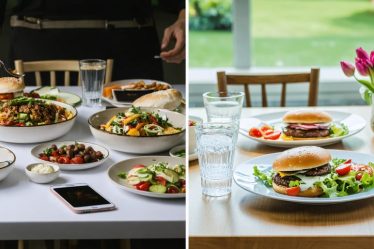
Store your unopened coffee beans in an airtight container at room temperature, and they’ll maintain peak freshness for up to 6-9 months from the roast date. That vacuum-sealed bag of premium coffee sitting in your pantry holds incredible potential – but time isn’t always on its side. While unopened coffee won’t technically spoil, its complex flavors and aromatic compounds gradually break down, even in sealed packaging. Understanding proper storage methods can extend your coffee’s shelf life significantly, ensuring that morning cup delivers the rich, bold experience you’re craving. Whether you’re a bulk shopper taking advantage of sales or a coffee connoisseur building your collection, knowing how to preserve your beans’ quality is essential. Let’s explore exactly how long your unopened coffee will last and the best ways to maintain its freshness, so you never have to compromise on taste.
How Long Does Unopened Coffee Really Last?
Whole Bean vs. Ground Coffee Shelf Life
You know how some of us buy coffee in bulk when there’s a great sale? Well, here’s something interesting I learned: whole coffee beans and ground coffee have quite different shelf lives, even when unopened!
Think of whole beans as nature’s little time capsules. When kept sealed in their original packaging, whole coffee beans can maintain their freshness for about 6-9 months. Their natural oils and flavors stay locked inside those little beans until you’re ready to grind them.
Ground coffee, on the other hand, is a bit more delicate. Once coffee is ground, it exposes more surface area to the elements, which speeds up the oxidation process. Even in unopened packages, ground coffee typically stays fresh for about 3-5 months. I learned this the hard way after stocking up on pre-ground coffee during a holiday sale!
If you’re planning to store coffee long-term, whole beans are definitely your best bet. They’ll reward you with that fresh-roasted aroma and rich flavor when you finally open the package. Just remember, these timeframes assume you’re storing your coffee in a cool, dry place away from direct sunlight.

Instant Coffee Storage Duration
Let me share a delightful secret about instant coffee – it’s basically the superhero of coffee storage! While I was organizing my pantry last month, I discovered an unopened jar of instant coffee tucked away, and I’m happy to report it was still perfectly fine to use.
Instant coffee can last an impressive 10-20 years when stored properly in its original, unopened container. The secret to this remarkable shelf life lies in its production process, where the coffee is thoroughly dried, removing nearly all moisture that could lead to spoilage.
For best results, keep your unopened instant coffee in a cool, dry place away from direct sunlight. Your kitchen pantry is perfect! While the flavor might gradually diminish over time, instant coffee remains safe to consume long after its “best by” date, as long as the seal remains intact and there’s no visible damage to the container.
Fun fact: I’ve heard from several of my coffee-loving friends that they keep an emergency stash of instant coffee precisely because of its incredible longevity. It’s perfect for those “just in case” moments!
Perfect Storage Conditions for Unopened Coffee
Temperature and Humidity Control
Ever notice how your favorite coffee shop keeps their beans in those sleek, airtight containers away from direct sunlight? There’s a good reason for that! The perfect home for your unopened coffee is a cool, dry place where the temperature stays relatively constant, ideally between 68-77°F (20-25°C).
I learned this the hard way after storing my premium coffee beans above the stove – trust me, not a smart move! Heat and humidity are like kryptonite to coffee freshness. When coffee is exposed to fluctuating temperatures or high humidity, it can start “breathing,” which accelerates the aging process and can even lead to condensation inside the package.
Think of your coffee like a good wine – it needs just the right environment to maintain its quality. A kitchen cabinet away from heat sources, or a dedicated pantry shelf, works perfectly. The humidity level should stay below 60% to prevent moisture from seeping into even unopened packages.
Here’s a pro tip I picked up from my local barista: if you live in a particularly humid climate, consider using silica gel packets near (but not in) your coffee storage area. Just remember to avoid the refrigerator or freezer for unopened coffee – contrary to popular belief, these environments can actually introduce unwanted moisture and compromise the coffee’s flavor profile.

Light Exposure and Packaging
Ever notice how your favorite coffee brands come in those sleek, dark-colored bags? There’s actually some clever science behind that! Light exposure is one of coffee’s biggest enemies, causing those precious beans to lose their flavor faster than you can say “morning brew.”
I learned this the hard way when I once stored my coffee in a clear glass container on my kitchen counter. While it looked Pinterest-worthy, my morning cup just wasn’t the same after a few weeks. That’s because both UV rays and visible light can trigger chemical reactions that break down the compounds responsible for coffee’s delicious aroma and taste.
That’s where proper coffee packaging comes into play. The best coffee bags typically feature multiple protective layers, including a light-blocking exterior and an airtight seal. Some premium brands even include one-way valves that let carbon dioxide escape without letting oxygen in.
If your coffee came in a paper bag or other less protective packaging, consider transferring it to an opaque, airtight container and storing it in a dark cabinet. This simple step can add weeks to your coffee’s shelf life while maintaining its rich, complex flavors. Just remember to keep the original packaging for reference – those “best by” dates and roasting information can come in handy!
Common Storage Mistakes to Avoid
Let’s chat about those storage slip-ups we’ve all made at some point – I know I certainly have! The good news is that once you know what to watch for, it’s super easy to keep your coffee fresh and delicious for longer.
First up, avoid storing coffee in the original paper bag once opened. Those bags might look cute, but they’re not designed for long-term storage. Instead, transfer your coffee to an airtight container with a strong seal to truly maximize your coffee’s flavor.
Another common mistake is keeping coffee near the stove or in direct sunlight. I learned this the hard way when I stored my favorite beans on that lovely sunny windowsill! Heat and light are coffee’s enemies, causing it to lose flavor faster than you can say “morning brew.”
Speaking of enemies, moisture is a big one. Resist the urge to store coffee in the fridge or freezer unless it’s vacuum-sealed and you’re planning for long-term storage. The humidity in these appliances can make your coffee absorb unwanted moisture and odors – nobody wants their morning cup tasting like last week’s leftovers!
Here’s something many of us overlook: buying too much coffee at once. I know those bulk sales are tempting (guilty as charged!), but coffee begins losing its precious flavors and aromas as soon as it’s roasted. Try to buy only what you’ll use within a month or two.
Lastly, don’t forget about those handy storage containers. While mason jars might look Pinterest-worthy, they often don’t seal well enough to keep air out. Invest in containers specifically designed for coffee storage – they’re worth every penny when it comes to preserving your coffee’s quality.

Signs Your Unopened Coffee Has Gone Bad
Even though unopened coffee can last quite a while, it’s essential to know when it’s time to say goodbye to those beans or grounds. Trust me, I learned this the hard way after discovering a forgotten bag in the back of my pantry!
First, check the packaging itself. If you notice any moisture damage, mold, or unusual staining on the package, it’s best to err on the side of caution and discard it. The same goes for any packages that appear to be bulging or have lost their vacuum seal – these are telltale signs that your coffee might have been exposed to unfavorable conditions.
When you open the package, use your senses as your guide. Fresh coffee should have a strong, pleasant aroma. If there’s little to no smell, or worse, if it smells musty or off, that’s a red flag. Look closely at the coffee – any visible mold growth or unusual discoloration means it’s definitely time to toss it.
For whole beans, check if they look dull or have an oily sheen when they shouldn’t. Ground coffee should be free-flowing and dry to the touch. If you notice any clumping or moisture, that’s another sign your coffee has gone bad.
Remember, while expired coffee won’t usually make you sick, it certainly won’t give you that perfect cup of joe you’re craving. When in doubt, it’s better to start fresh with a new package.
As we’ve explored, keeping your unopened coffee fresh isn’t rocket science, but it does require a bit of mindfulness. I learned this lesson the hard way after discovering a forgotten bag of premium beans in my pantry that had sadly lost its magic! Remember, while unopened coffee can last anywhere from 6-9 months for ground coffee and up to 2 years for whole beans, these timeframes are only achievable with proper storage.
Keep your coffee in a cool, dry place away from direct sunlight, and avoid those warm spots above your stove or near windows. If you’re like me and love stocking up during sales, consider investing in airtight containers for an extra layer of protection. And here’s a pro tip I swear by: write the purchase date on your coffee bags – it’s a simple habit that can save you from wondering whether that unopened package is still good to brew.
Ultimately, trust your senses – if your coffee looks, smells, and tastes fresh after opening, you’re good to go. Happy brewing, coffee lovers!



